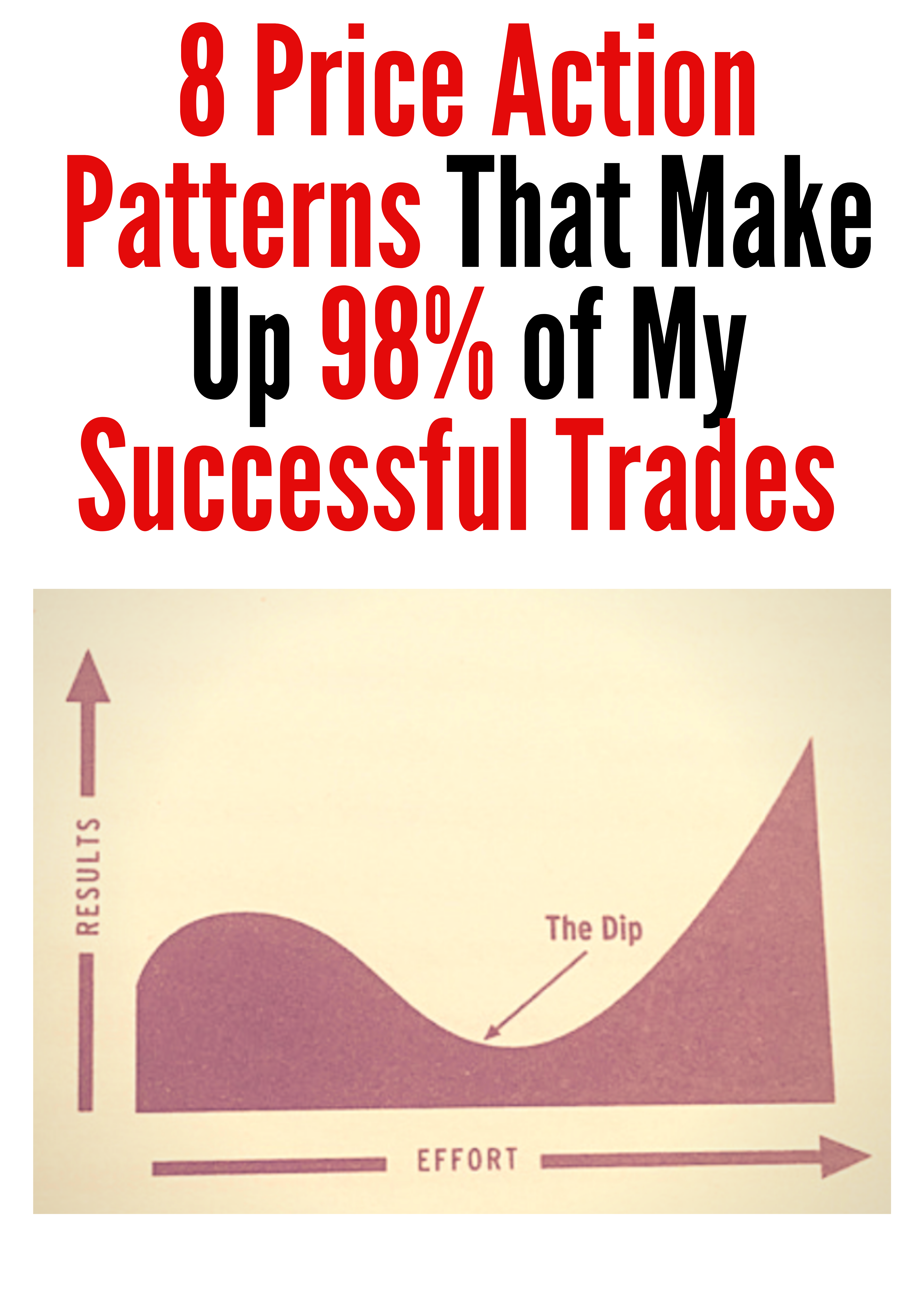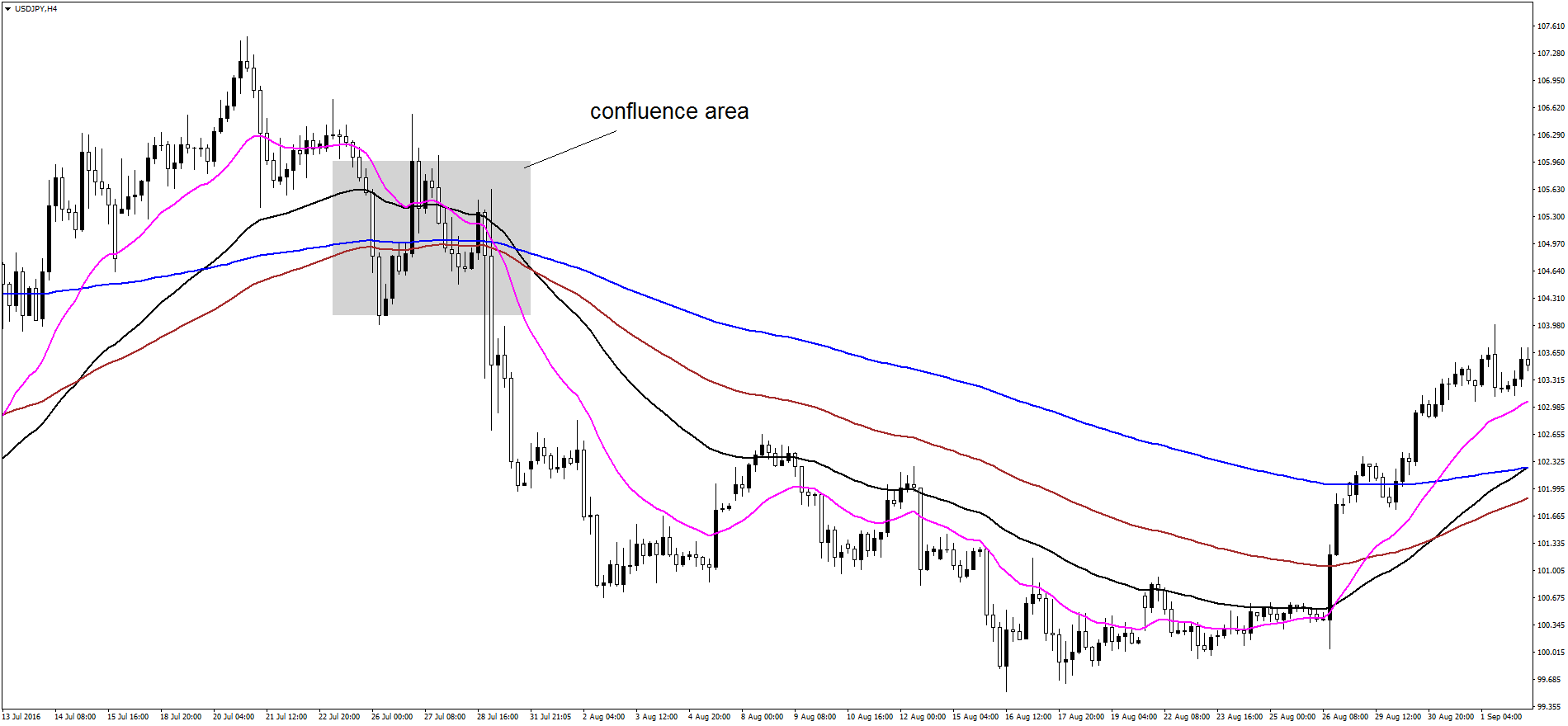Types of Moving Averages That Will Make You See Forex Trading in a Different Way
Types of Moving Averages That Will Make You See Forex Trading in a Different Way
by: Colibri Trader
Moving averages represent the most popular trend indicators. If the RSI (Relative Strength Index) is the most popular oscillator, when it comes to trend trading, moving averages are the first choice for a trader.

Like any trend indicator, the moving average is plotted directly on the actual chart, not on a separate window. It effectively averages the values in the previous candles, to plot the current one.
Based on the calculation formula, there are different types of moving averages (MA): simple moving average (SMA), exponential moving average (EMA), displaced moving average (DMA), etc.
Traders favor either the SMA or the EMA. The SMA simply averages the closing prices for the period it considers.
For example, the SMA (100) considers the last one hundred candles and averages their closing prices to
For some, the EMA is more accurate. It reduces the lag by applying more weight to recent prices.
IMPORTANT: In the end, it depends very much on the trading strategy used. Some strategies work better with SMA’s rather than EMA’s. Or, the other way around.
To put this into perspective, think of the Bollinger Bands indicator. It is considered that the indicator is far more accurate if the MBB (Middle Bollinger Band) is an EMA.
Support and Resistance with Moving Averages
A moving average offers great support and resistance. The bigger the period the moving average considers, the stronger the support and resistance area.
Moreover, the bigger the time frame, the stronger the support and resistance. In other words, when the price hits a 200 EMA on the monthly chart, there’s a strong likelihood it will hesitate at the level.
True Fact: Further, price acts around moving averages just like it does around a classical trend line. Once broken, the support becomes resistance. Once resistance gets broken, it turns into support.
However, when compared with classical support or resistance, the one provided by moving averages is as powerful. It is called dynamic support and resistance. I am still in favour of the classical support and resistance.
In fact, it means it moves together with price. Due to the way they’re calculated, traders use moving averages to trail stops when riding a trend.
Others use them to add to a strong trend. As a rule of thumb, the more price comes to a moving average, the weaker the trend becomes.
Therefore, it is not recommended to use a moving average to add more than two times to a trend. If the price finds the strength to reach it again, the trend is not that strong. Check out the Daily EURUSD chart below. There are two times where price is close to moving average. It is a perfect dynamic resistance zone that pushes price lower.
Defining Bull and Bear Markets with Moving Averages
Traders define a bull or bear market when different moving averages cross on the same time frame. The most known crosses are the golden and death ones.
A) Golden Cross
A golden cross forms when the 50-day moving average moves above the 200-day one. It shows bullish conditions.
When this happens on the major stock indices, it is said that the market enters “bullish territory”. From this moment on, traders will look to buy the dips.
The same is valid when trading a currency pair. A golden cross shows the start of a new bullish trend and the challenge will be to pick the best entry places. That usually happens when a retracement occurs. Check out this article if you are not sure how to enter when you have already missed the initial signal.
B) Death Cross
On the other hand, when the 50-day moving average crosses below the 200-day one, a death cross forms. The death cross is the opposite of a golden one. Hence, it shows a bearish market.
This simple strategy is enough to define the state of a market. Sometimes, when the market consolidates on such a time frame, these crosses form multiple times.
Yet, the price will hesitate when it meets the averages. There is an example taken from the Daily EURSD chart. The first cross is a death cross as can be seen from the chart.
The 50-day moving average is going below the 200-day moving average in a classic bearish scenario. In the beginning of November, price retraces back to the 200-day moving average, giving a chance to those that have missed the first entry to re-enter. It has surely taken out a lot of traders that had their stops around the 1.1300 area.
The second cross on this EURUSD chart is a bullish one. The 50-day moving average crosses above the 200-day moving average forming a classic golden cross. This is showing a change the trend. From that point on, price has been on a steady rise.
IMPORTANT: Usually traders using moving averages are using wider stops, as well. As can be seen from the “Death Cross” if your stop loss was too tight, you would have been taken out of a profitable trade very quickly.
Traders using moving averages as their primary strategy know that and are trying to position themselves favourably, using wider stops. I am not going to dive into the intricacies of moving average trading strategies, because they are too many.
There are whole books written on this topic and as you know, I do use primarily price action in trading.
Look for Confluence Areas
Some trend-following traders do not settle only with golden or death crosses. They create a system that works/should work on every time frame.
As such, they end up applying on a chart multiple moving averages. They start with a small one (20-day), add the 50-day, then the 100-day and finally the 200-day one.
The idea is to measure a trend’s strength. When the averages are perfectly aligned or travel in a “perfect order”, the trend is at its maximum strength.
When the smaller moving averages cross the higher ones, the trend falters. To spot if this is a fake move or not, traders look for confluence areas.
If price hits the moving averages in a confluence area, the support or resistance level is stronger than usual. As such, that’s the perfect place to add to a trade.
Confluence areas are rare, but when they occur, they are very powerful. Some traders are only taking trades when price approaches such area. As I like to say, there is no holy grail in trading. Those pleases sometimes break and price pierces through them establishing a new trend.
It is of utter importance that traders have the right money management skills. If in doubt, check out this essential chart showing what will happen to your capital once you start losing. Pay attention to the part that shows you how much “% to recover loss”.

Conclusion
Moving averages are great trend indicators. Traders like to say that “the trend is your friend”. As such, everyone wants to ride the perfect trend. But is it really possible?
A moving averages system can show the perfect trend. You should keep in mind the following:
- Whenever adding a position to a trend, do that only the first two times the price hits the moving average. If the price keeps hitting the average, the trend weakens. It will ultimately reverse.
- When multiple moving averages align perfectly, that’s the trend to ride.
- Golden and death crosses keep you on the right side of the market. Use the lower time frames to find the perfect entry.
- As with any other trading system, moving averages do have their perks, so have in place a great money management system. Do not overtrade!
Moving averages are also part of various other trading strategies. For example, they act as confirmation.
Some traders use divergences between the price and an oscillator. When they spot one, it would be better if some other indicator confirms the support/resistance level. This is where the different types of moving averages come to help.
To sum up, a moving average offers the purest perspective of a market. Its most simplistic interpretation is that when the price is above, the market is bullish; when the price is below, the trend is bearish.
To the surprise of many, such a simple approach works more than people think. Especially if the moving average uses a higher period, like the 100-day or 200-day ones. But again, as the latin maxim says: De Omnibus Dubitandum. In other words: Doubt Everything
Happy Trading,
Colibri Trader
p.s.
Have you checked out my article in which I walk you through an example of a Real Trade
If you have any questions, please let me know at: admin@colibritrader.com
p.p.s.
If you are interested to know more about the way I see the markets, you can check out my professional trading strategy page. I have packed my knowledge in 24 videos and included over 150 pages of a trading manual. I am showing you my strategy step-by-step as it is.
No gimmicks, nothing hidden. I walk you through real life examples and show you how to minimise risk, while maximising profits. Consider my advanced strategy only if you are really interested in learning about advanced trading methods.
I am so convinced that the way I see the markets will make a difference to your trading, that I am offering a 30-day money-back guaranteed if it doesn’t. Fair? If not enough, I will top it off with a beer 🙂














Hi Colibritrader,
I may try to use this moving averages as assitance for your advance technique, even if it only adds 1 more position as you mention it will eventually weaken.
Still on learning mode on your advance technique, seems price flutuates a lot recently…
-Harry
Hi Harry,
I wanted to let you know that I am writing those articles, because I want to show other angles of trading. It does not mean that I do recommend them to trade with them. I am not using them myself, but think that it is fair to show them how they are used to other traders. If you think you can utilise them in your trading, that’s great, but statistics show that the more you change your strategy, the smaller the chances to win. I might be wrong, but that’s my humble opinion. Once you find something that works, stick to it.
thanks colibritrader,
so far been consistent using your basic teaching. thanks for reminding.
-harry
My pleasure Harry- always
Hi Colibritrader
Thanks very much for your teaching you really inspiring.
You said the price should hit the MA average at least twice, does that apply to 100 & 200 as well.
HI Sello,
Yes- that is correct! Ask me if you have any other questions!!!!